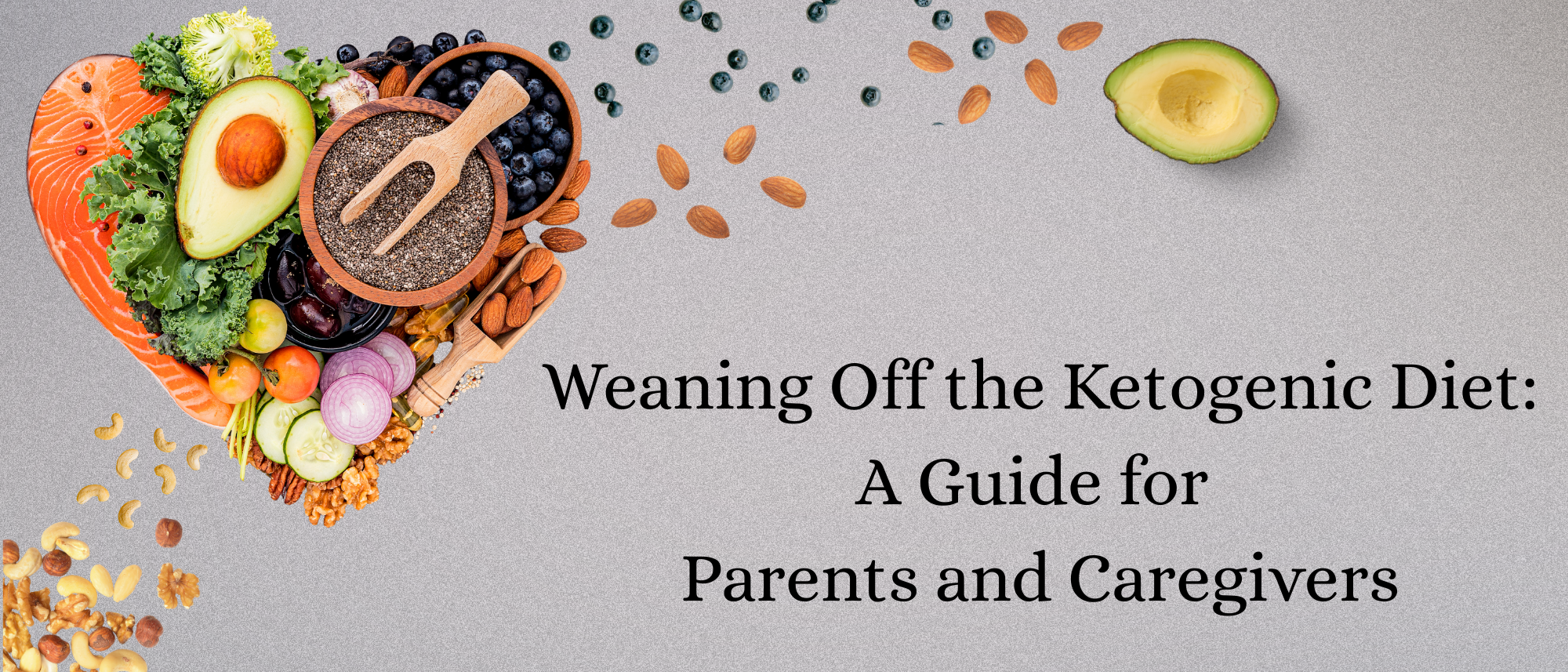Weathering the Storm: Ensuring Your Child's Ketogenic Diet During Inclement Weather
/Author: Laura Dority, MS, RD, LD
Editor: Amy Merwarth, RD, LD
As caregivers of children on a medical ketogenic diet for epilepsy, preparation is essential, especially when faced with the unpredictability of inclement weather. Power outages, hurricanes, and other natural disasters can pose significant challenges, but with careful planning, you can ensure your child's dietary needs are met without interruption.
1. Stock Up on Non-Perishable Keto-Friendly Foods
Having a supply of non-perishable, keto-friendly foods is crucial. These foods do not require refrigeration and can be lifesavers during extended power outages. Review your child’s ketogenic meal options and make a list of non-perishable items that your child will eat. Then get with your ketogenic dietitian to compile a handful of meal options using these non-perishable options.
Here are some examples of non-perishable food options that can work in a ketogenic diet:
Nuts and Seeds: Almonds, walnuts, macadamia nuts, chia seeds, and flaxseeds are excellent sources of fats and can be easily stored.
Nut Butters: Almond butter, peanut butter, and other nut butters (without added sugar) are convenient, nutrient-dense, and shelf-stable.
Canned Meats and Fish: Canned salmon, sardines, tuna, and chicken provide protein and healthy fats.
Olives: These can be included as high-fat snacks that require no refrigeration.
Coconut Milk and Cream: Full-fat coconut milk or cream can be used in place of dairy and provides a good source of fat.
Shelf-Stable Cheeses: Hard cheeses like Parmesan can last longer without refrigeration. Consider cheese crisps or shelf-stable cheese snacks as well.
Oils (olive, avocado, coconut): Great options to get the necessary extra fat needed to stay in ketosis and can be used in place of butter in most meals.
Dehydrated or Freeze-Dried Vegetables: These can be rehydrated and used in meals.
Pork Rinds & Low-Carb Jerky: These are excellent snacks that can fit perfectly into a keto diet. Aim for products with no added sugars and preservatives.
Medical Ketogenic Formula: Even if your child does not rely on ketogenic medical formula on a regular basis, consider having a small supply on hand for inclement weather situations. These medical formulas can provide your child with all of their nutrition needs in a shelf-stable product.
2. Maintain an Adequate Supply of Medical Formula
For many children on the ketogenic diet, medical formulas are a vital part of their nutrition. Ensure you have a sufficient supply to last through potential disruptions by regularly checking your inventory and reordering before you run low, especially during seasons of inclement weather. Talk to your supplier about the process for emergency ordering due to weather and delivery timelines. Store the formula properly by keeping it in a cool, dry place, and check expiration dates regularly.
3. Plan for Power Outages
Power outages can jeopardize refrigerated and frozen keto foods. Here’s how to stay prepared if you have some warning of an impending storm (such as a hurricane):
Coolers and Ice Packs: Have coolers and ice packs ready to keep perishables cold if the power goes out. Try and have several meals weighed and ready-to-go if you know your area might be impacted by a storm.
Dry Ice: Consider purchasing dry ice, which can keep items frozen for a longer period.
Non-Electric Kitchen Tools: A manual can opener and battery-operated or hand-crank blender can be useful for preparing meals without power. A portable gas stove or grill can be used to cook or reheat foods when there’s no electricity.
4. Emergency Meal Planning
With the help of your ketogenic dietitian, develop a list of simple, keto-friendly meals that can be prepared with minimal ingredients and no cooking. Here are a few ideas:
Tuna Salad: Mix canned tuna with mayonnaise and serve with olives.
Nut Butter with Dark Chocolate: Spread nut butter on a piece of dark chocolate for a quick snack.
Avocado & Salt: Slice an avocado and sprinkle with salt for a nutritious and easy option.
Salmon & Avocado: Canned salmon mixed with avocado (shelf-stable if uncut) and a handful of nuts.
Sardines & Olives: Sardines with olives, drizzled with olive oil, and a side of pickles.
5. Medication & Supply Management
Ensure all medications are filled and up-to-date. In an emergency, access to pharmacies may be limited, so having a sufficient supply is critical. For those kiddos on g-tubes and fed through a pump, consider having gravity bags and/or 60 cc syringes so that you can still provide formula without the necessary power a pump requires. Also, be sure to have an adequate supply of glucose or ketone monitoring devices and supplies if these are a part of your ketogenic monitoring plan.
6. Hydration & Electrolytes
Maintaining proper hydration and electrolyte balance is crucial, especially during stressful situations. Stock up on:
Water: Be sure to have an ample supply of bottled water for hydration and medication administration.
Electrolyte Supplements: Powdered or tablet forms are convenient and can help you stay hydrated. Check with your ketogenic diet team on best electrolyte supplements for your unique needs.
Broth or Bouillon Cubes: These are great for maintaining sodium levels and can be made into a quick drink.
7. Create a Disaster Kit
Assemble a disaster kit that includes:
First Aid Supplies: Basic first aid materials and any specific items related to your child's condition.
Flashlights and Batteries: To navigate in the dark and prepare meals using your gram scale.
Contact Information: Keep a list of essential contacts, including your healthcare provider and dietitian.
By preparing thoroughly, you can help ensure your child's ketogenic diet remains uninterrupted during inclement weather, reducing the risk of seizures and maintaining their health. Stay safe and proactive, and always reach out to your healthcare team with any concerns or questions.
Remember, preparation is key to navigating any storm successfully. Stay safe and take care!






















